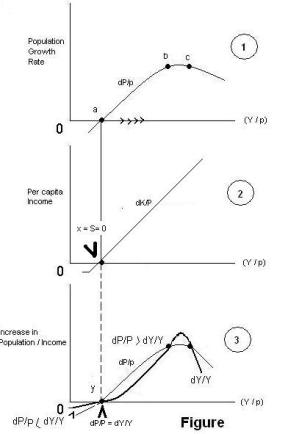 Government earns revenue through plenty of ways like interests , dividends ,trading profits etc and tax is one of the primary tool of revenue in above mentioned ways. Some one rightly describes tax as;
Government earns revenue through plenty of ways like interests , dividends ,trading profits etc and tax is one of the primary tool of revenue in above mentioned ways. Some one rightly describes tax as;
“A fine is a tax for doing something wrong whilst tax is a fine for doing something right.”
Pakistan, the state of 180,800,000 people collected the total tax revenue of Rs 1,317,857 millions according to Budget estimate (B.E) 2008-09 which is less than satisfactory and witnessed actual slow in real term. I will begin my writing with Ogden Nash’s stanza
The more you earn, the less you keep,
And now I lay me down to sleep.
I pray the Lord my soul to take,
If the tax-collector hasn’t got it before I wake.
The sources of tax revenue in Pakistan are:
- Federal Taxes
- Provincial Taxes
- Federal Taxes

Let’s take a detailed view of direct and indirect taxes of Pakistan.
Income Tax
It is kind of direct tax that is lived on a person having income more than the certain level. According to Plato:
“When there is an income tax, the just man will pay more and the unjust less on the same amount of income.”

The revised slabs for taxable income through Finance Act 2008 are given below;
| S. No. |
Taxable income |
Rate of tax. |
| (1) |
(2) |
(3) |
| 1. |
Where taxable income does not exceed Rs.180,000 For women taxpayer it is Rs.240,000. |
0% |
| 2. |
Where the taxable income exceedsRs.180,000 but does not exceed
Rs.250,000 |
0.50% |
| 3. |
Where the taxable income exceedsRs.250,000 but does not exceed
Rs.350,000 |
0.75% |
| 4. |
Where the taxable income exceedsRs.350,000 but does not exceed
Rs.400,000 |
1.50% |
| 5. |
Where the taxable income exceedsRs.400,000 but does not exceed
Rs.450,000
|
2.50% |
| 6. |
Where the taxable income exceedsRs.450,000 but does not exceed
Rs.550,000 |
3.50% |
| 7. |
Where the taxable income exceedsRs.550,000 but does not exceed
Rs.650,000 |
4.50% |
| 8. |
Where the taxable income exceedsRs.650,000 but does not exceed
Rs.750,000, |
6.00% |
| 9. |
Where the taxable income exceedsRs.750,000 but does not exceed
Rs.900,000, |
7.50% |
| 10. |
Where the taxable income exceedsRs.900,000 but does not exceed
Rs.10,50,000,
|
9.00% |
| 11. |
Where the taxable income exceeds
Rs.10,50,000 but does not exceed
Rs.12,00,000, |
10.00% |
| 12. |
Where the taxable income exceedsRs.12,00,000 but does not exceed
Rs.1450,000, |
11.00% |
| 13. |
Where the taxable income exceedsRs.1,450,000 but does not exceed
Rs.1,700,000,
|
12.50% |
| 14. |
Where the taxable income exceeds Rs.1,700,000 but does not exceed
Rs.1,950,000, |
14.00% |
| 15. |
Where the taxable income exceeds Rs.1,950,000 but does not exceed
Rs.2,250,000,
|
15.00% |
| 16. |
Where the taxable income exceeds Rs.2,250,000 but does not exceed
Rs.2,850,000, |
16.00% |
| 17. |
Where the taxable income exceeds Rs.2,850,000 but does not exceed
Rs.3,550,000, |
17.50% |
| 18. |
Where the taxable income exceeds Rs.3,550,000 but does not exceed
Rs.4,550,000, |
18.50% |
| 19. |
Where the taxable income exceeds Rs.4,550,000 but does not exceed
Rs.8,650,000, |
19.00% |
| 20. |
Where the taxable income exceeds Rs.8,650,000 |
20.00% |


Workers Welfare Tax
It is charged at 2% on the manufacturers having income of Rs 100,000 and above. Employees Old Age Benefit Scheme is financed through this fund.
Capital Value Tax
Capital Value Tax is payable by every individual, association of persons, firm and company, not born on the National Tax Register. Currently CVT is payable with different rates on immovable commercial and non commercial property, residential flats, and purchase of shares of stock exchange.
Worker Profits participation Fund
This tax is paid by the industrial undertaking having more than 10 workers at 5% of their profits for distribution amongst workers. Any leftover amount after distribution amongst the workers is deposited with the government to become part of the WWF.
Custom Duties
Customs duties are levied through Customs Act, 1969 on goods imported into Pakistan. It contributes 24.4% in the indirect taxes and 15% in total taxes collected by FBR. The collection of custom duties is important as it also contributes in the base calculation of other taxes like sales tax on imports and withholding tax. Only 15 major commodity groups contributed 78% of the total customs duties during 2007-08. Auto sector is the top contributor of the customs duty. The composition of gross customs duty collection is provided as following:
1. Import Duties
2. Warehouse Surcharge
3. Export Development Surcharge
4. Misc (auctions, recovery of arrears, defense etc)
Federal Excise
Federal Excise Duties are levied on domestic production, imports and services rendered in the country. The major excisable commodities include cigarettes, cement, beverages, natural gas and POL products, whereas excisable services are; Air Travel, Insurance, Non-Fund Services provided ( In FY: 2007-08 the NFS were extended to full coverage of Non-fund Financial Services (NFS), and FED on Air Travel was rationalized.) by banking or non-bank financial companies and Franchise services. The old Central Excises Act, 1944 has been replaced by The Federal Excise Act, 2005, with effect from 1st July, 2005. As part of budgetary measures for the year 2007-08, Special FED at 1% has been levied on goods which are manufactured or are imported in Pakistan.
Sales Tax
Sales tax is liable on sales of all goods and services produced in the country excluding those goods exempted in the Sales Tax Act, 1990. The rate structure was different for native products and imports. The details of sales tax collection at import stage also point out the higher concentration as fifteen major commodity groups have contributed around 87% of total ST (imports) collection. The major commodity groups include POL Products (27), Edible Oil (15), Plastic (39), Vehicles and Parts (87), Iron and Steel (72), Mechanical Machinery (84), Electrical Machinery (85), Organic Chemicals (29), Paper & Paper Board (48), Oil seeds etc (12), Misc Chemicals Products (38), Rubber (40), Coffee, Tea, and Spices (9), Aluminum Products (76) and Articles of Iron & Steel (73).
Provincial Taxes

Conclusion
In above mentioned direct tax caption you must have been noticed that there is no wealth tax which is thought provoking. It has been stopped since 2007.Wealth tax for 2006-07 were Rs 47m .Will Durant rightly says;
“If our economy of freedom fails to distribute wealth as ably as it has created it, the road to dictatorship will be open to any man who can persuasively promise security to all?”
One of the primary maxims of taxation is that,the burden of tax should fall on the people according to their ability .But in Pakistan the case is opposite I-e taxed poor, exempt wealthy. Wealth tax is the best tool of controlling the alarming rate of unequal distribution in under developing economies like Pakistan. But unfortunately every next government of Pakistan starts loading its bank accounts rather than addressing the real problems of country. Gandhi brilliantly states;
“The things that will destroy us are: politics without principle; pleasure without conscience; wealth without work; knowledge without character; business without morality; science without humanity; and worship without sacrifice.”
References:
http://www.finance.gov.pk
http://www.fbr.gov.pk
State bank of Pakistan

33.605801
73.043747























